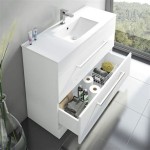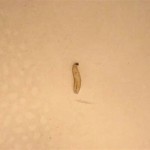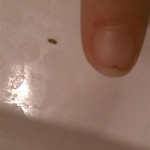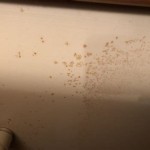How to Paint Mould Bathroom Ceiling Fan Coverage
Mould growth in bathrooms is a common problem, particularly on ceilings and around exhaust fans. The consistently high humidity and lack of adequate ventilation create an ideal environment for mould spores to thrive. Painting over mould without proper preparation is not a sustainable solution. It merely conceals the problem temporarily, and the mould will inevitably reappear, potentially causing structural damage and health concerns. This article provides a step-by-step guide to effectively addressing mould on a bathroom ceiling fan and the surrounding area, encompassing thorough cleaning, proper preparation, and appropriate painting techniques to ensure a long-lasting and aesthetically pleasing result.
The presence of mould indicates a moisture issue, often stemming from inadequate ventilation during and after showers or baths. Before commencing any cleaning or painting, it is crucial to identify and rectify the source of the moisture. This might involve repairing leaky plumbing, improving ventilation by installing a more powerful exhaust fan, or consistently running the existing fan for an extended period after bathing.
Identifying and Addressing the Root Cause of Mould
The initial step in combating bathroom mould is a thorough investigation to pinpoint the source of moisture. Obvious culprits include leaky pipes, dripping showerheads, or condensation forming on cold surfaces. However, less visible sources, such as rising damp from walls or inadequate sealing around windows, can also contribute to the problem. Regular inspection of plumbing fixtures, grout lines, and sealant is recommended to detect and address leaks promptly.
A key element in preventing mould recurrence is improving ventilation. The existing exhaust fan should be evaluated for its CFM (cubic feet per minute) rating. A general guideline is that the fan should be able to exchange the air in the bathroom eight times per hour. To calculate the necessary CFM, determine the bathroom's volume in cubic feet (length x width x height) and divide that number by 7.5. If the current fan is insufficient, upgrading to a higher CFM model is advisable. Furthermore, consider installing a timer switch to ensure the fan runs for at least 20 minutes after each shower or bath, even if occupants forget to turn it on.
In addition to mechanical ventilation, promoting natural airflow can also help reduce humidity. Leaving the bathroom door slightly ajar after showering allows moisture to dissipate more quickly. Ensuring proper insulation in the ceiling and walls can minimize condensation formation, especially during colder months. Addressing these underlying moisture issues is paramount to prevent mould from returning after cleaning and painting.
Safe Mould Removal and Cleaning Procedures
Before undertaking any mould removal, prioritize personal safety. Mould exposure can cause allergic reactions and respiratory problems, particularly for individuals with pre-existing conditions. Wear appropriate protective gear, including a respirator mask rated N95 or higher, gloves, and eye protection, to minimize inhalation and skin contact. Open windows and doors to ensure adequate ventilation during the cleaning process.
Various cleaning solutions can effectively remove mould from bathroom surfaces. A mixture of bleach and water (1 part bleach to 10 parts water) is a common and effective option. However, bleach can damage certain surfaces, so it is crucial to test it on an inconspicuous area first. Alternatively, commercial mould removal products are available and often contain fungicides to inhibit mould regrowth. These products should be used according to the manufacturer's instructions.
To clean the mould, gently scrub the affected areas with a soft brush or sponge dampened with the chosen cleaning solution. Avoid using excessive force, as this can damage the surface and spread mould spores. Allow the solution to sit on the surface for several minutes to penetrate and kill the mould. Rinse thoroughly with clean water and dry the area completely. For porous surfaces like drywall, more aggressive cleaning may be necessary, and in severe cases, replacement of the affected material might be required. When cleaning the ceiling fan specifically, ensure the power is turned off at the breaker. Carefully remove the fan blades and wash them separately with the cleaning solution. Pay close attention to removing mould from crevices and hard-to-reach areas. Allow all components to dry completely before reassembling.
Proper Preparation and Painting for Mould Resistance
Once the mould has been removed and the surface is completely dry, proper preparation is essential for ensuring the paint adheres correctly and provides lasting protection against future mould growth. This involves priming the surface with a mould-resistant primer and selecting a suitable paint formulated for high-humidity environments.
Priming is a crucial step in preventing mould recurrence. A mould-resistant primer creates a barrier that inhibits mould growth and helps the paint adhere to the surface. Apply the primer evenly using a brush or roller, ensuring complete coverage of the affected area. Allow the primer to dry completely according to the manufacturer's instructions before proceeding with painting. Choosing the right primer is vital; look for products specifically labelled as mould-resistant or anti-microbial.
Selecting the appropriate paint is equally important. Opt for a paint formulated for bathrooms or kitchens, as these paints typically contain mildewcides that inhibit mould growth. Semi-gloss or gloss finishes are generally recommended for bathrooms because they are less porous than matte finishes and are easier to clean. Apply two coats of paint, allowing each coat to dry completely before applying the next. Ensure even coverage and avoid applying the paint too thickly, as this can lead to drips and uneven drying. When painting around the ceiling fan, use painter's tape to protect surrounding surfaces and hardware. Consider removing the fan blades again during painting to avoid getting paint on them accidently. Following these steps will contribute to a more durable and mould-resistant paint finish, helping to maintain a clean and healthy bathroom environment.

Bathroom Ceiling Mold Removal When To Clean Call Branch Environmental

How To Remove Mold From A Bathroom Ceiling Family Handyman

How To Get Rid Of Mold On A Bathroom Ceiling Puroclean Matawan

How To Permanently Remove Mold From Bathroom Ceiling With Vinegar

How To Fix Mouldy Ceiling Zinsser 5 1 Paint Tutorial

Best Practices For Painting A Bathroom Ceiling With Mold

Mildew Ceiling Solution Shorts Homerepairtutor

Best Practices For Painting A Bathroom Ceiling With Mold

Painting The Ceiling In A Bathroom Home Painters Toronto

How To Fix And Repair A Bathroom Ceiling Covered In Black Mould
Related Posts







